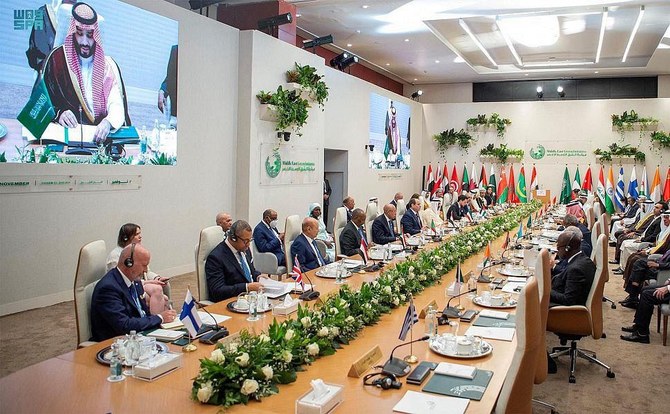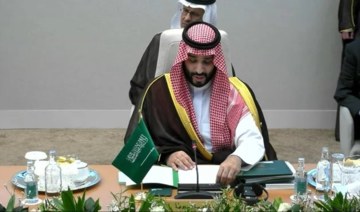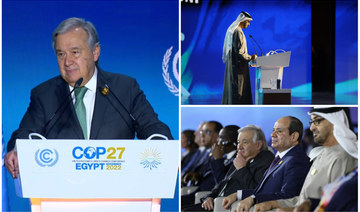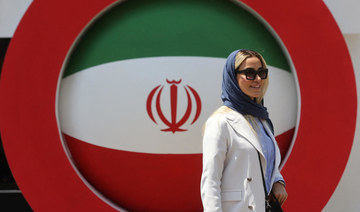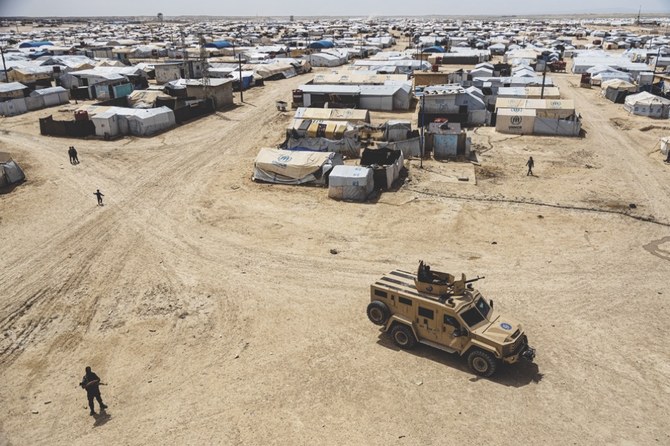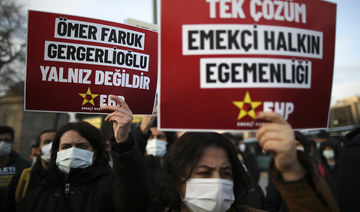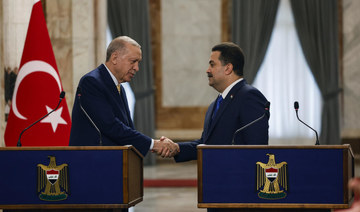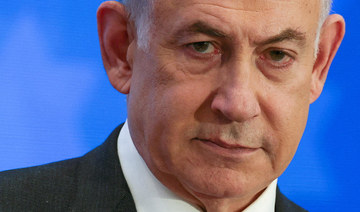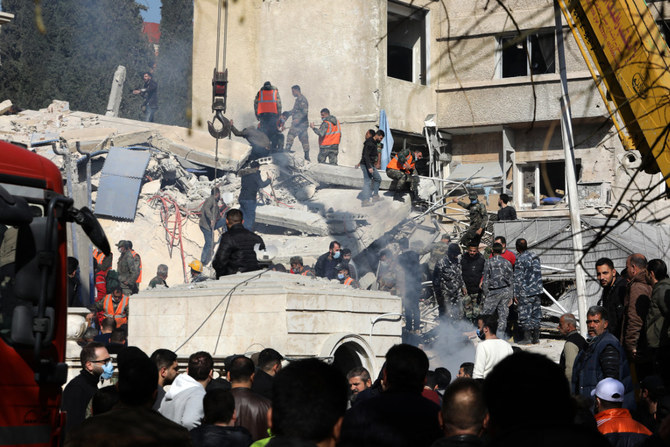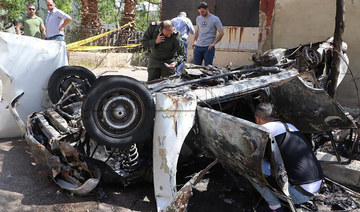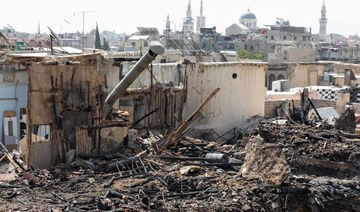The full text of the second edition of the Middle East Green Summit presidential communiqué and statement can be found below.
COMMUNIQUÉ
At the kind joint invitation from President Abdel Fattah El-Sisi of the Arab Republic of Egypt, and HRH Prince Mohammed bin Salman bin Abdulaziz Al Saud, Crown Prince and President of the Council of Ministers of the Kingdom of Saudi Arabia, the second edition of the Middle East Green Initiative Summit was held in Sharm El-Sheikh, Egypt, in the presence of a number of leaders from Middle Eastern and African countries along with international officials in the environment and climate change sector on Monday the 7th of November 2022, co-chaired by Saudi Arabia and Egypt.
The assembled leaders valued the efforts made by the Kingdom of Saudi Arabia in preserving the environment and limiting the impact of climate change, particularly the two initiatives by HRH Prince Mohammed bin Salman bin Abdulaziz Al Saud, Crown Prince and President of the Council of Ministers of the Kingdom of Saudi Arabia, the “Saudi Green Initiative” and the “Middle East Green Initiative” for the positive impact they will leave on the environment in regional countries and the world, improving the quality of life, and facing the challenges of climate change.
Assembled leaders valued the efforts made by the Arab Republic of Egypt and President Abdel Fattah El-Sisi to host the second Middle East Green Initiative Summit in his country in conjunction with (COP27).
The assembled leaders stressed the importance of joint collective action in achieving the desired goals of the Middle East Green Initiative, believing in the importance of its goals that can be realized through concerted efforts and active contributions by regional nations.
The assembled leaders affirmed that the second Middle East Green Initiative would contribute to accelerating the realization of 2030 sustainable development goals, and to achieving prosperity for the populations of member states.
The assembled leaders stressed the importance of achieving climate and environmental goals, in addition to adhering to related international conventions approved by the United Nations, in a way that contributes to achieving the UN sustainable development goals for 2030 and the UN Decade in Ecosystem Restoration, determination to achieve integration and close coordination between member states, and investing that in raising their collective capability to face the challenges of climate change.
The assembled leaders affirmed that member states in the initiative adhere to implementing their pledges and commitments within the framework of the Paris Agreement, and to working on taking the necessary measures to curb the rise of the average global temperature in accordance with the levels set by the Paris Agreement.
1-The assembled leaders reiterated the importance of working to strengthen support for the implementation of the Paris Agreement, and to achieve sustainable development goals that contribute to economic diversity and the eradication of poverty.
2-The assembled leaders emphasized enhancing the integration of the optimal energy mix for electricity production, supporting the electrical grid’s capacity for the entry of renewable energy, contributing to achieving climate change targets through signing interconnection memorandums and agreements that were signed with multiple regional nations such as Iraq, Egypt, and Jordan, as an extension of interconnection cooperation for the GCC countries.
3-The Assembled leaders affirmed support for efforts to reduce emissions in the Middle East region and beyond by signing bilateral and multilateral agreements and MOUs in the field of clean energy, which will advance cooperation in clean energy and its technologies and expand its scope in this field.
4-The Assembled leaders endorsed the importance of joint cooperation to address and manage the challenges posed by greenhouse gas emissions through a holistic approach and various available clean technologies, including the circular carbon economy approach and its four pillars, which represent an integrated, comprehensive framework and applications that countries can utilize in developing climate action plans in line with the national priorities and conditions of each country.
5-The Assembled leaders reiterated strengthening joint action to support efforts to develop and disseminate modern technologies for carbon capture, utilization, and storage, and decarburization technologies, in particular, from energy-intensive and emission-intensive sectors, while promoting investments in this field to contribute to the international efforts to address emissions.
6-The Assembled leaders affirmed commitment to adopting an appropriate national approach to achieve a just transition to a low-emissions development model capable of adapting to the effects of climate change, based on proven scientific recommendations, agreed responsibilities and principles, primarily fairness and justice, and taking into account the national conditions of each country.
7-The Assembled leaders stressed the importance of joint international action in the field of “clean fuel” solutions to provide food, which contributes to achieving sustainable development goals, in general, and Goal (7), in particular, that aspires to universal access to reliable and sustainable energy at the most affordable cost.
8-The assembled leaders expressed their determination to continue cooperation with friendly countries and regional international organizations to ensure achieving the goals of the Middle East Green Summit, and to serve the interests of member states and international partners.
The assembled leaders affirmed their commitment to prepare a better future for upcoming generations, believing in the importance of what the initiative aspires to do towards the sustainable development of the region and the preservation and restoration of biodiversity in it for the benefit of the countries and peoples of the whole world.
The assembled leaders reiterated the importance of emphasizing the mobilization and provision of necessary funding for the Middle East Green Initiative, and for all technologies and solutions that contribute to addressing emissions through bilateral,regional, and international frameworks, and coordination in this context, in addition to welcoming the financing pledges made by a number of banks and the OPEC Fund for International Development.
The assembled leaders affirmed that implementation of the objectives of the Middle East Green Initiative would contribute to reducing and managing greenhouse gas emissions from all sources, including renewable energy and clean technologies to manage emissions from hydrocarbon materials, and remove millions of tons of carbon emissions through technological and natural solutions.
The assembled leaders renewed their determination to exert efforts to reach the initiative’s goals to limit land deterioration, restore vegetation cover, maintain biological diversity, adapt to climate change, curb its negative effects to reduce economic losses, support sustainable development, and realize prosperity.
The assembled leaders renewed their determination to agree to enhance cooperation and support regarding the improvement of managing natural resources, and combating land deterioration and desertification, while making a commitment to make joint efforts to strengthen water security and food security in the face of the negative effects of climate change.
The assembled leaders stressed the importance of cross border cooperation in various areas, especially considering the management of vulnerable resources due to climate change, in a manner that strengthens joint action frameworks including bilateral, regional, and collective ones.
The assembled leaders called upon countries, related regional and international organizations and commissions, as well finance institutions and the private sector to provide financial and technical support for the initiative to enable it to achieve its ambitious targets on the national, regional, and international levels.
The assembled leaders expressed their appreciation of President Abdelfattah El-Sisi of the Arab Republic of Egypt, and HRH Prince Mohammed bin Salman bin Abdulaziz Al Saud, Crown Prince and President of the Council of Ministers of the Kingdom of Saudi Arabia, for their leadership of these efforts and joint invitation in hosting the second summit of the Middle East Green Initiative in the city of Sharm El Sheikh, and for the hospitality and support for this summit by the government and people of the Arab Republic of Egypt.
STATEMENT
At the joint invitation of President Abdelfattah El-Sisi of the Arab Republic of Egypt, and His Royal Highness Prince Mohammed bin Salman bin Abdulaziz Al Saud, Crown Prince of the Kingdom of Saudi Arabia and Prime Minister, the Green Middle East Summit, in its second edition, was held in Sharm El Sheikh, Egypt, in the presence of a number of leaders of Middle Eastern and African countries and international officials in the environment and climate change sector on Monday, November 07, 2022, under the joint Saudi-Egyptian presidency.
The gathered leaders valued the efforts exerted by the Kingdom of Saudi Arabia in the field of preserving the environment and limiting the effects of climate change, in particular the two initiatives of His Royal Highness Prince Mohammed bin Salman bin Abdulaziz Al Saud, Crown Prince and Prime Minister of the Kingdom of Saudi Arabia, the Green Saudi Arabia, and the Green Middle East, for their positive impact on the environment in the countries of the region and the world, improving the quality of life, and facing the challenges of climate change.
The leaders valued the efforts of Egypt, and President Abdelfattah El-Sisi, for his country's hosting of the second Green Middle East Summit, in conjunction with the holding of the Climate Change Conference (COP27).
The leaders stressed the importance of joint work in achieving the desired goals of the Green Middle East Initiative, believing in the importance of its goals that would be achieved through concerted efforts and the active contribution of countries in the region.
The leaders affirmed that the second Green Middle East Initiative will contribute to accelerating the achievement of the 2030 Sustainable Development Goals, and achieving prosperity for the peoples of the member states.
The leaders stressed the importance of achieving climate and environmental goals, adhering to the relevant international conventions approved by the UN, which contributes to achieving the goals of the UN Sustainable Development Organization for the year 2030, and the UN Decade for the Restoration of Ecosystems, and the determination to achieve integration and close coordination among Member States and invest that in raising its collective capacity in facing the challenges of climate change.
The gathered leaders affirmed the commitment of the member states of the initiative to implement their pledges and commitments within the framework of the Paris Agreement and to take the necessary measures to limit the average global temperature rise according to the levels set by the Paris Agreement.
The leaders reiterated the importance of working to enhance support for the implementation of the Paris Agreement and the achievement of sustainable development goals, in a way that contributes to economic diversification and poverty eradication.
The leaders emphasized the enhancement of the integration of the optimized energy mix to produce electricity, support for the accommodation of electric grids to enter renewable energy, and the contribution to achieve climate change goals by signing memoranda and electrical interconnection agreements that were signed with many countries in the region such as Iraq, Egypt, and Jordan, and what they will constitute of an extension of cooperation in the electrical interconnection grids with the Cooperation Council for the Arab States of the Gulf (GCC).
The leaders affirmed support for efforts to reduce emissions inside and outside the Middle East by signing bilateral and multilateral agreements and memoranda of understanding in the field of clean energy, which will advance and expand cooperation in clean energy and its technologies in this field.
The leaders stressed the importance of joint cooperation to address and manage the challenges arising from greenhouse gas emissions through a holistic approach and various available clean technologies, including the circular carbon economy approach and its four pillars, which represent an integrated and comprehensive framework that countries can benefit from and its applications in their development of climate action plans in line with the national priorities and conditions of each country.
The gathered leaders reiterated their emphasis on enhancing joint action to support efforts to develop modern technologies for use and storage of the carbon capture, and decarbonization technologies, in particular, from energy-intensive and emission-intensive sectors, with promoting investments in this field to contribute to the international effort to address emissions.
The leaders affirmed their commitment to adopt an appropriate national approach to achieve a just transformation of a low-emissions development model capable of adapting to the effects of climate change, based on proven scientific recommendations, responsibilities and agreed principles, foremost of which is equity and justice, and taking into account the national circumstances of each country.
The leaders stressed the importance of joint international action in the field of "clean fuel" solutions to provide food, which contributes to achieve the sustainable development goals in general, and the seventh goal, in particular, which aspires to universal access to reliable and sustainable energy at the most affordable cost.
The leaders expressed their determination to continue cooperation with friendly countries and regional and international organizations to ensure the achievement of the goals of the Green Middle East Summit, and to serve the interests of member states and international partners.
The leaders affirmed their commitment to creating a better future for the generations to come, believing in the importance of the initiative's aspiration for the sustainable development of the region and the preservation and restoration of biodiversity in it for the benefit of the countries and peoples of the whole world.
The leaders reiterated the importance of emphasizing the mobilization and provision of the necessary financing for the Green Middle East Initiative, and for all technologies and solutions that contribute to addressing emissions through bilateral, regional and international frameworks. In addition, they welcomed the financing pledges provided by a number of funds, especially the Islamic Development Bank and the OPEC Fund for International Development.
The leaders emphasized that implementing the goals of the Green Middle East Initiative will contribute to reducing and managing greenhouse gas emissions from all sources, including renewable energy and clean technologies for managing hydrocarbon emissions, and removing millions of tons of carbon emissions through technical and natural solutions.
The leaders renewed their determination to exert efforts to achieve the initiative's goals to reduce land degradation, restore vegetation cover, preserve biodiversity, adapt to climate change and reduce its negative impacts to reduce economic losses, support sustainable development and achieve prosperity.
The leaders renewed their determination to agree to enhance cooperation and support in improving the management of natural resources and combating land degradation and desertification, with a commitment to make joint efforts to enhance water and food security in the face of the negative effects of climate change.
The leaders stressed the importance of cross-border cooperation in various fields, especially with regard to managing vulnerable resources due to the climate change, in a way that enhances joint action frameworks, whether in the bilateral, regional or collective framework.
The gathered leaders called on countries, organizations, relevant regional and international bodies, financing institutions and the private sector to provide financial and technical support for the initiative to enable it to achieve its ambitious goals at the national, regional and international levels.
The gathered leaders expressed their appreciation to President Abdelfattah El-Sisi of the Arab Republic of Egypt, and His Royal Highness Prince Mohammed bin Salman bin Abdulaziz Al Saud, Crown Prince and Prime Minister of the Kingdom of Saudi Arabia for their leadership of these efforts and their joint invitation to host the second Green Middle East Summit in Sharm El-Sheikh and to the Government and people of Egypt for their generous hospitality and support for this summit.



